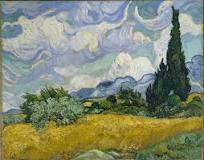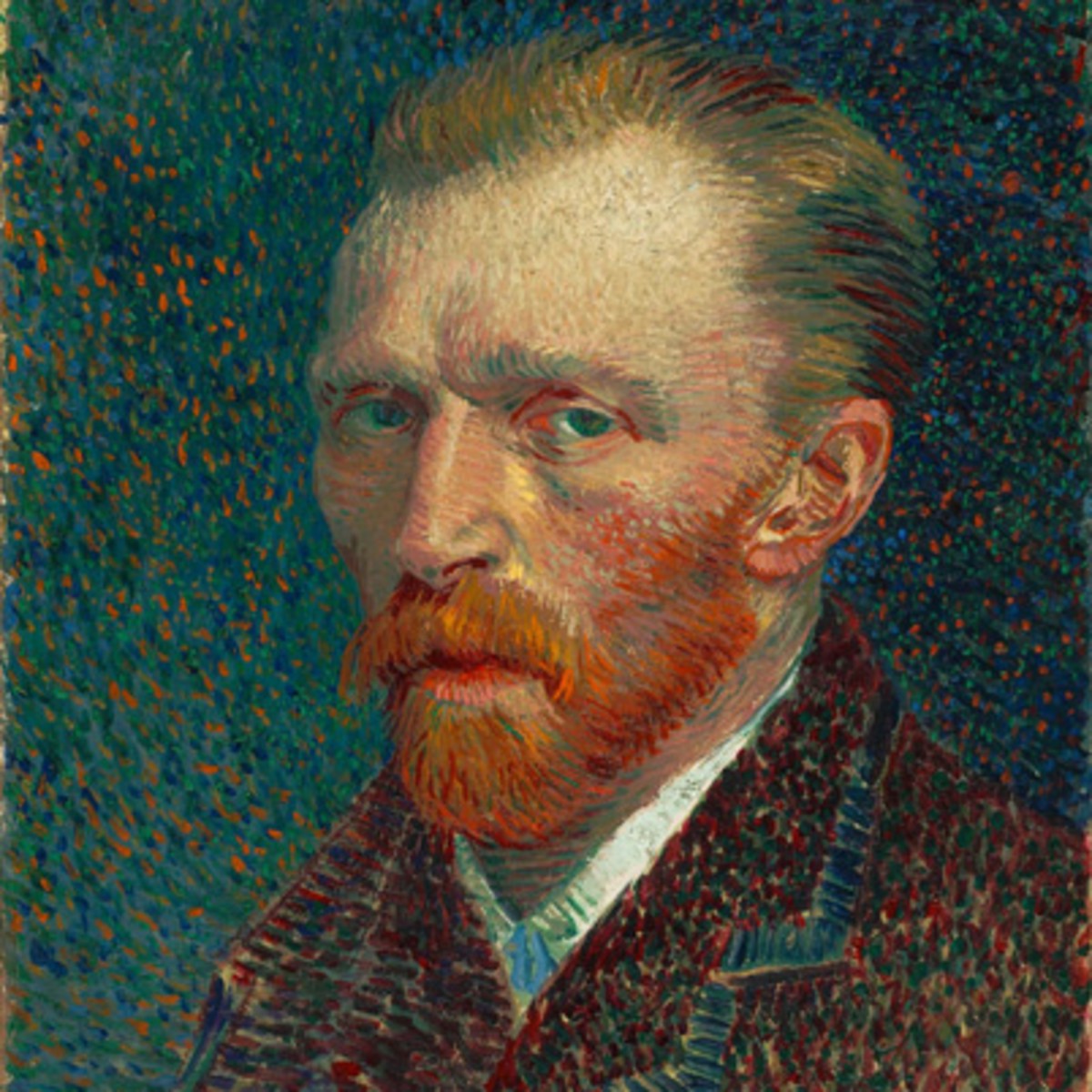 Starry Night by Vincent Van Gogh (1889)
Starry Night by Vincent Van Gogh (1889)
This blog will evaluate the different interpretations of Vincent Van Gogh?s Starry Night, including some of the history of the dutch post-impressionist painter who has become one of the most influential figures in western history and is perhaps most famous for his Starry Night. Which was painted a year before Van Gogh died in 1890, Auvers-sur-Oise, France. Van Gogh mainly painted locations with personal meaning and were familiar to him.
In 1888, a year before Starry Night was painted, Van Gogh had an argument with a friend and French artist, Paul Gauguin. The dutch painter had suffered from mental illness throughout his life and was admitted to Arles mental asylum soon after the argument as he cut off his ear. Many believe Starry Night was painted from the view Gogh had from his window in Arles asylum.
Unlike many other artists who painted realistic landscapes and portraits, Van Gogh used exaggerated and expressive brushstrokes to visualize his emotions and reveal personal impressions of the subject being painted. In Starry Night, the emotions of isolation and insanity underlie which relates to how he was a struggling artist with unappreciated artwork. The night sky of Starry Night is brimming with whirling clouds, shining stars and a bright moon. The swirling brushstrokes guide the viewer?s eye around the painting with spacing between the stars creating a dot-to-dot effect. The village is peaceful in comparison to the dramatic night sky. The church steeple dominates the village and symbolizes unity in the town and gives and impression of isolation.
The first interpretation creates a religious presence to the painting. Van Gogh was religious with a religious uncle who was a theologian. Starry night conveys strong feelings of hope through the bright lights of the stars shining down over the dark landscape and night. In 1888, Van Gogh wrote a personal letter which described; ?a great starlit vault of heaven? one can only call God?. Starry night depicts moon, stars and a sky surrounded by large halos of light with a church steeple standing out above a smaller, less detailed buildings in the town below. This has been related to Genesis 37:9; ?Then he dreamed still another dream and told it to his brothers, saying, ?Look, I have dreamed another dream. And this time, the sun, the moon and the eleven stars bowed down to me?. Gogh painted exactly eleven stars in Starry Night, perhaps directly referencing the biblical verse accounting Joseph, a ?dreamer? and an outcast in the company of his eleven older brothers. Van Gogh may have related to Joseph as he was an outcast in the art world at the time. In the bible, Joseph was thrown into a pit, sold into slavery and suffered many years of imprisonment, like Gogh did in the last years of his life in the Arles Asylum. Also, no matter what Joseph never received acceptance or respect from his brothers, like how the world-renowned artist never got recognition from art critics of his day.
The second interpretation focuses on the cypress tree, a prominent element of Starry Night. Van Gogh may have identified himself with the looming cypress tree in the foreground of the infamous painting. It is a plant that reoccurs in several of his paintings, such as the painting pictured below:
 Wheatfield with cypresses by Vincent Van Gogh (1889)
Wheatfield with cypresses by Vincent Van Gogh (1889)
The cypress tree in Starry Night is the most eye-catching element of the painting but also the most ambiguous part, mostly because of its size and it?s dark and sinister presence contrasting heavily with brightly coloured stars. Starry Night was painted during a sad period in Van Gogh?s life making it unsurprising that the artist identified with the emotions of the cypress tree. The form and colours of the cypresses in Starry Night are inconsistent with the cypresses Gogh has painted before. In Van Gogh?s painting of Wheatfield with cypresses, the trees are brighter like the rest of the painting and are set during the day. This makes them more visible but still have a massiveness to them. Van Gogh also paints cypresses in pairs which is uncommon of cypress trees which may depict how his mind and mental health are uncharacteristically together compared to other?s minds. The brushstrokes are largely unbroken, long and unrefined which creates a bridge between the sky, cypress trees and the town.
The third interpretation is the hope Van Gogh depicts in Starry Night. The painting portrays the passion the painter had for nighttime where the powerful sky sits above the quiet village. This suggests that Gogh is contrasting life and death with the stars and moon being the main light sources. The thick, obvious brushstrokes are used to dramatize the motions of the stars, clouds and moon. Even with the dark night in the painting, it is still possible to see the light of hope with the shining stars as a light of guidance. This interpretation shows that Van Gogh knew he was going to be at peace when he died this is portrayed with the use of bold colours in Starry Night.
In comparison, all three interpretations are similar as they connect with each other but are also different because of the different themes of hope, mental health and religion. Van Gogh?s hope and mental health connect because he is finding hope in the darkest years of his life. Religion connects to that because religion has given him hope and helped him with his mental health because he feels less isolated as Joseph?s story has similar emotions as Van Gogh?s life.
From this research I have learnt a huge amount about the dutch painter?s history and his reasons for the elements he used in his paintings nearer the end of his life, especially in Starry Night. I also learnt a lot about the interpretations of the famous painting as I never had thought about the meaning behind Starry Night before and I have formed my own opinion of what the painting means. I could use this research of Starry Night in future projects by using the techniques and aesthetic look of brushstrokes as a new style with my own art and animations. I could use the free flowing and impressionist style instead of making characters or backgrounds look realistic and as expected which can also help the mood of the projects.
In my opinion, Starry Night represents Van Gogh?s mental health and how he has learnt to let go of it and not let it tie him down anymore (even though he was in an asylum when it was painted) as painting this scene is his escape. Starry Night is a painting of acceptance and hope where Van Gogh can finally accept the life he has led and accept his death peacefully. The luminous sky is more eye-catching than the dark town and cypress trees which seem to highlight how the sky is Van Gogh?s future, which to him is bright as it represents heaven, and the town and cypress trees represents his past and how his mental health has bridged him to acceptance and hope and has brought Van Gogh closer to heaven. Cypress trees are usually found in cemeteries and have a meaning of morning so the cypress trees are his bridge to heaven and death of a peaceful manner.
 Vincent Van Gogh (1853?1890)
Vincent Van Gogh (1853?1890)


